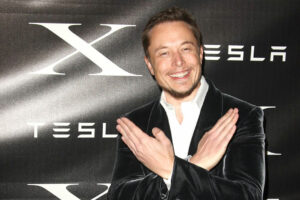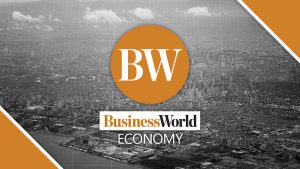Twitter rebrand: Elon Musk’s X misses the spot

I SUPPOSE you could say changing the Twitter bird logo to an “X” makes complete sense. As the recognized icon for “make it go away,” X just about sums up the achievements of Elon Musk’s social network so far.
Gone are many of Twitter’s users, half of its advertisers, 80% of its employees and its operational stability. Gone is its credibility as a leading platform for following breaking news, a forum for activism and change, or a place to simply get updates on whatever it is you care about.
Next up — unless this is all one big ruse, which can’t be discounted — is the one thing still giving Musk’s $44-billion deal for the social media site some value: the Twitter brand itself. It will now be known as X, Musk has decided. The little blue bird, famous internationally, is destined to disappear.
In a series of bewildering corporate-speak tweets on Sunday, X Chief Executive Officer Linda Yaccarino explained Musk’s vision of an app offering audio, video, messaging, banking and “well… everything.” She wrote that X would be the “future state of unlimited interactivity.” (No, me neither.)
The generous take is that the Twitter brand carries a lot of baggage, as co-founder Jack Dorsey himself acknowledged on Sunday, and so a fresh start might be the best way to draw a line between the old and the new.
But Musk’s execution of this “rebrand” has shown that this isn’t an idea that has been well thought through. The “interim” X logo looks like a piece of WordArt, created using an off-the-shelf font. The X.com domain name, for a considerable time on Sunday, was just displaying a holding page for domain name registrar GoDaddy because it hadn’t been configured correctly.
Musk claims to be acting on an original vision for “X” that he has had since he bought the X.com domain name in 1999. Later, wise people advised that PayPal was a better name for a payments provider. That advice would help earn Musk his fortune.
Decades on, Musk is still fixated on “X,” apparently not content with it being merely the name of one of his children. Evidently lacking sensible people in his ear, Musk now thinks the X name can help transform Twitter into a “super app” in the mold of China’s WeChat. The Tencent Holdings Ltd. service has around 1.3 billion users and combines multiple services within one immensely powerful app. Other examples include Grab, which offers rideshare, food, and financial services in Southeast Asia.
On the surface, it should be straightforward to emulate the success of those apps, particularly with the head-start of owning a popular social network that people check multiple times a day. But the promised land of a US super app has been elusive to companies bigger, richer, and smarter than “X.” Western consumers, as well as being more stuck in their ways when it comes to payments and banking, have proven less amiable to having one company control so many things in their lives.
The conditions that made super apps work in Asia, where many people’s first experience of the internet was via mobile, not desktop, simply do not apply in the markets Musk thinks he can target. US consumers aren’t (for the most part) un- or under-banked, or lacking in credit options. Existing methods of managing money are flawed but adequate enough to make entering with new services an uphill battle. Besides, Musk isn’t even ready — he is still in the process of applying for the necessary regulatory approvals.
Even companies that do dominate in many areas — like Google parent Alphabet, Inc. — have learned that consumers don’t want everything locked into a super app, hence why Google Maps, YouTube, Gmail and others are all separate pieces of app real estate. Meta Platforms, Inc., similarly, has a “family of apps.” Uber Technologies, Inc. separates its rideshare app from Uber Eats. This is partly due to the simple fact that apps that try to do too much become cluttered and slow.
Musk simply finds himself out of touch with the needs of the everyday internet user. And not for the first time, he has greatly underestimated the difficulty, and basic feasibility, of implementing his grand ideas. He thought eliminating bots on Twitter would be trivial, but he has in fact made the problem worse. He thought self-driving Teslas would be driving themselves from coast-to-coast by now. He thought he would gain permission to build a tunnel from New York to Washington, DC, “rapidly.”
He now thinks “if done right, [X] would become half of the global financial system.” In pursuit of that goal, he is apparently prepared to complete the destruction of a still valuable asset in Twitter’s brand. At least this way he can claim he did it on purpose.
BLOOMBERG OPINION




